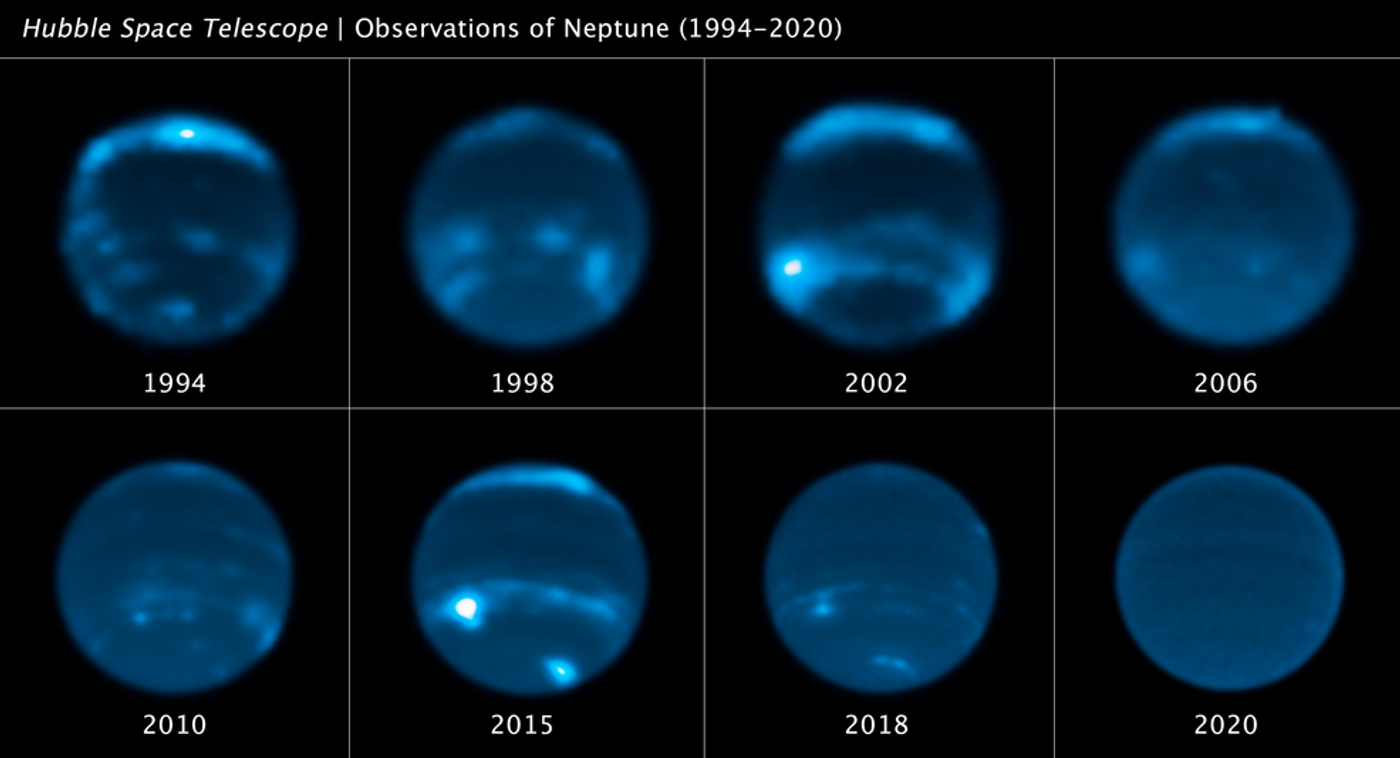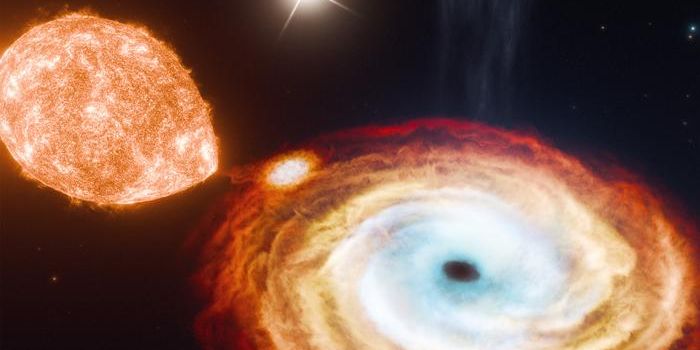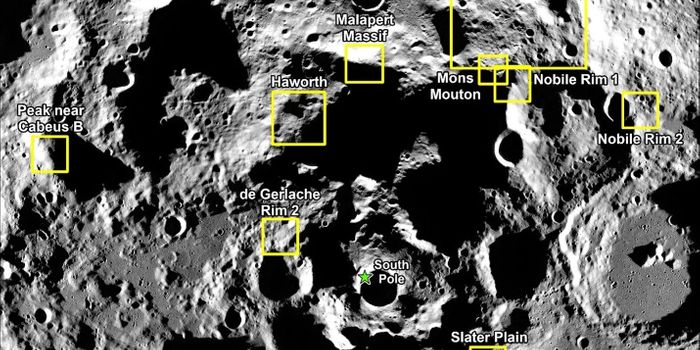Neptune's Shifting Cloud Abundance Linked to Solar Cycle, Surprising Astronomers
The clouds of Neptune have garnered reactions of awe and excitement from both scientists and the public ever since NASA’s Voyager 2 spacecraft sent back the first images of this distant world in 1989. Now, scientists have recently published findings spanning almost 30 years of research regarding a connection between Neptune’s clouds and our Sun’s 11-year solar cycle, which involves the strengthening and weakening of the Sun’s magnetic field, driving its solar activity, including solar storms. The researchers observed a decrease in cloud abundance on Neptune starting in 2019, which is surprising since Neptune receives approximately 0.1 percent of the sunlight that Earth’s receives from the Sun.
"Even now, four years later, the most recent images we took this past June still show the clouds haven't returned to their former levels," said Erandi Chavez, who is a graduate student at the Center for Astrophysics | Harvard-Smithsonian (CfA), and lead author of the study he started while an undergraduate at UC Berkeley. "This is extremely exciting and unexpected, especially since Neptune's previous period of low cloud activity was not nearly as dramatic and prolonged."
For the study, the researchers relied on archival near-infrared data from the Lick Observatory in California, the W. M. Keck Observatory in Hawaii, and NASA’s Hubble Space Telescope to track changes in Neptune’s cloud activity between 1994 and 2022. Through this, they observed several cloud brightness variations, including an increase in cloud brightness in 2002, a decrease in 2007, increased again in 2015, followed by a substantial decrease in 2020, which they note is the lowest brightness ever seen and is also when most of Neptune’s clouds disappeared entirely. The most surprising finding was discovering that these cloud brightness variations appear to be synced with the 11-year solar cycle, but the researchers noted a two-year time lag between when the solar cycle peaks and Neptune’s cloud abundance.
Neptune cloud activity observed by NASA's Hubble Space Telescope between 1994 and 2020. (Credit: NASA, ESA, Erandi Chavez (UC Berkeley), Imke de Pater (UC Berkeley))
"It's fascinating to be able to use telescopes on Earth to study the climate of a world more than 2.5 billion miles away from us," said Dr. Carlos Alvarez, who is a support astronomer at the Keck Observatory and a co-author on the study. "Advances in technology and observations have enabled us to constrain Neptune's atmospheric models, which are key to understanding the correlation between the ice giant's climate and the solar cycle."
Despite the almost 30 years of data, work is needed to better understand how the solar cycle influences Neptune’s clouds, which the researchers hope to use to also help better understand cloud activity on exoplanets, as well.
What new discoveries will astronomers make about the connection between the solar cycle and Neptune’s clouds in the coming years and decades? Only time will tell, and this is why we science!
As always, keep doing science & keep looking up!
Sources: NASA, Icarus, NASA (1), EurekAlert!, Lick Observatory, W. M. Kick Observatory, NASA (2)









